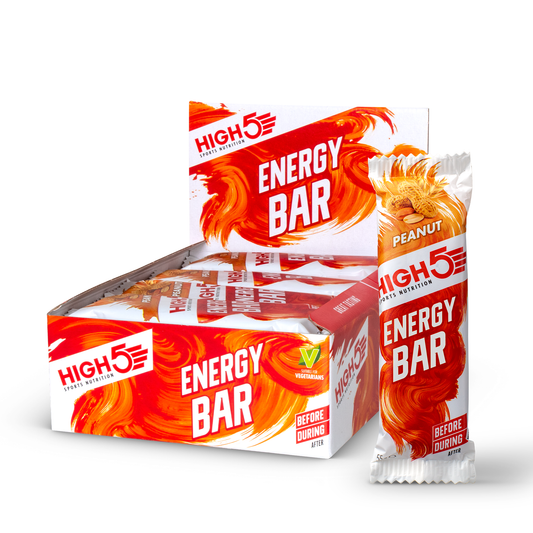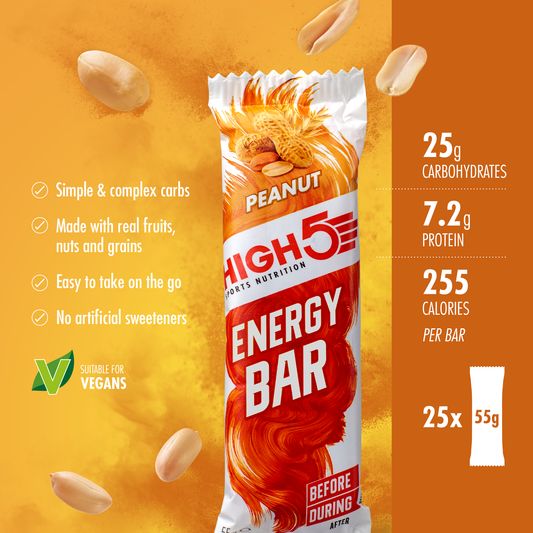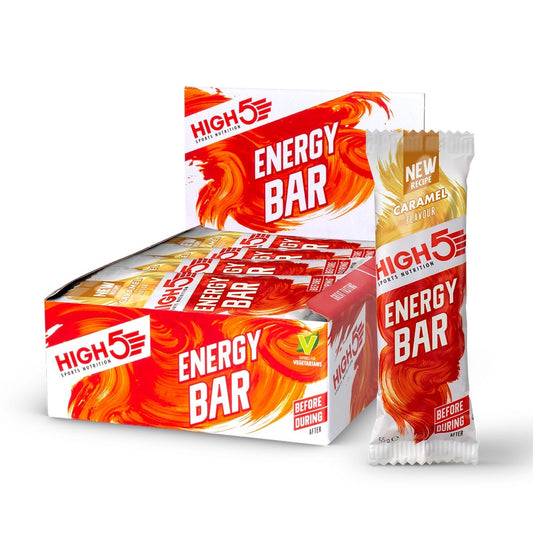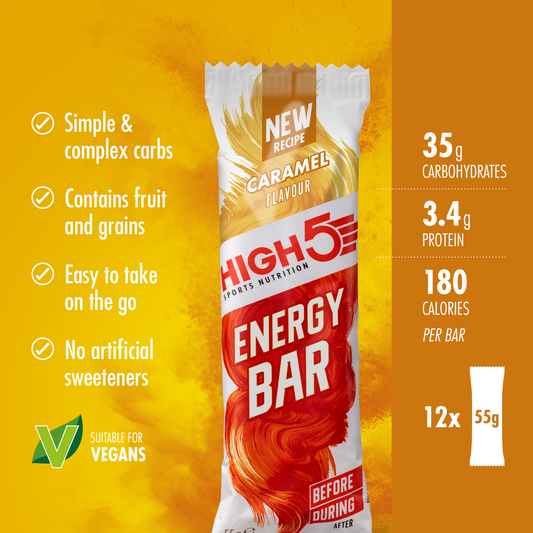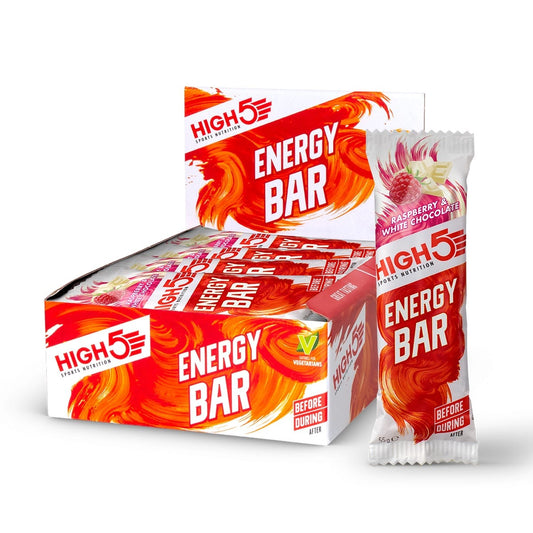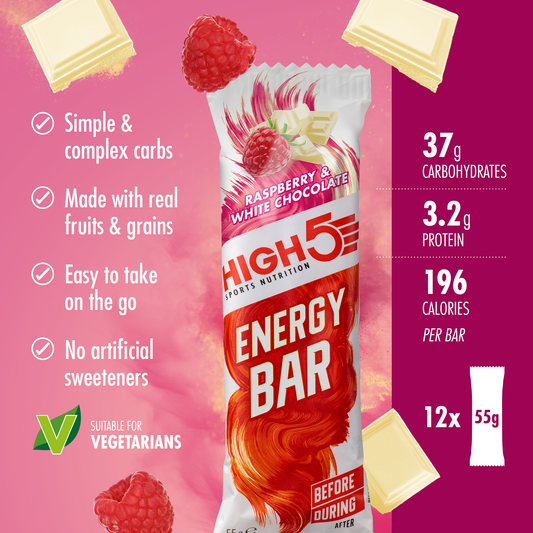From the preparation phase to recovery, not forgetting the effort itself, nutrition is one of the key elements of cycling performance, whatever your level. But faced with a plethora of products on offer, and sometimes complex labels, how can you make sense of them, and what do they really do? Probikeshop helps you find your way!
The main principles of nutrition
- Nutritious foods: electrolytes, carbohydrates, proteins, vitamins, food supplements;
- Product types: energy drinks, bars, gels, meals, food supplements;
- Nutrition plans according to type of effort: short training sessions or competitions, long training sessions or competitions;
Food products
Before drawing up your nutrition plan, it's important to be familiar with the various nutritious foods, particularly their role in the body and how they are assimilated by the body, in order to guide you towards the products best suited to your needs.
Visit carbohydrates are the human body's main source of energy. As fuel for the body, carbohydrates enable you to pedal faster, harder and longer. There are different types, each with its own characteristics, making them complementary.
- The maltodextrin is a mixture of different sugars (glucose, maltose, maltotriose, etc.) obtained by partial hydrolysis of wheat or corn starch. Maltodextrin has the advantage of being well tolerated by the body, and of not causing digestive and intestinal discomfort as with mixtures of simple sugars. It is an interesting supplement for endurance athletes, which can be used before exercise to maximize glycogen energy reserves, during exercise to provide constant, lasting energy throughout the event, and after exercise to facilitate recovery. What's more, maltodextrin has a very low sweetening power, making it possible to obtain drinks with a neutral aroma and no sweet taste that are pleasant to drink.
- Visit fructose is a natural sugar, found mainly in fruit. Although it is a simple sugar, it has a low glycemic index, making it interesting for endurance sports, as a complement to other sugars, because ingested in excessive quantities, it can cause bloating and even diarrhea.
- Visit glucose is a simple sugar, but unlike fructose, its glycemic index is very high. It should therefore be used sparingly, even though it has the advantage of providing immediate energy.
In addition to carbohydrates proteins provide an additional source of energy during exercise. But beyond that, the main benefit of protein lies in muscle mass gain, and above all in tissue repair after prolonged and/or intense effort.
Visit electrolytes (or mineral salts) play a role in transmitting nerve impulses, maintaining cellular metabolism and many other functions. Eliminated through perspiration, electrolytes need to be supplemented when practicing a sporting activity.
- Sodium Sodium: a mineral essential for maintaining cell structure, it contributes to acid-base balance, helps the neuromuscular system function properly and prevents dehydration. The recommended daily intake is 5,000 to 8,000 mg per day, but can rise to 10,000 mg for prolonged exertion.
- Potassium Potassium: playing a key role in muscle and heart contraction, as well as in the transmission of nerve impulses, potassium's main property is to combat cramps. A minimum daily intake of 2,000 mg is required to ensure the survival of the body's cells and the proper functioning of the cardiac system.
- Chloride Chloride: a trace element that helps to distribute water in the body and transport carbon dioxide in the blood, it also aids digestion and helps maintain the body's acid-base balance. Chloride must be provided at a daily intake of 800 to 1,000 mg, otherwise physical and digestive nervous disorders may occur.
- Calcium Calcium: its main function is to ensure bone formation, in association with vitamin D, but it is also involved in blood coagulation and muscle contraction. It should be consumed at a level of 700 to 800 mg per day.
- Magnesium Magnesium is a trace mineral that plays an important role in electrolyte balance, participating in the neuromuscular transmission of nerve impulses. It is also involved in the functioning of the cardiac system. Its recommended daily intake is at least 350 to 375 mg.
Visit vitamins are essential for the body to function properly, whether for the bone system, the heart, digestive functions or mental balance. While a balanced diet is usually sufficient to assimilate the necessary quantity of vitamins, regular physical activity requires additional intake. The most essential vitamins for athletes are as follows:
- The vitamin C is necessary for the synthesis of blood vessels and muscles. It has anti-oxidant properties, i.e. it limits the harmful effects of free radicals and is also involved in the formation of red blood cells. In concrete terms, it helps combat fatigue and infections.
- The vitamin D plays a vital role in bone solidity, by helping to bind calcium. It therefore plays a key role.
- Visit vitamin Kalthough little known, is extremely important, as it is involved in the blood clotting process, calcium binding to bones and cell growth.
- Last but not least vitamin B1 is perhaps the most important for sportsmen and women, as it converts fatty acids, carbohydrates and proteins into energy during physical effort. It is therefore essential to take it on a daily basis, as well as during exercise.
In addition, many sports nutrition products contain caffeine. A stimulant that acts deep down in the muscle cells to provide long-lasting power and delay the onset of muscle fatigue, caffeine also helps maintain a good level of concentration.
Regular, intense physical exercise can lead to certain deficiencies, and ultimately to injury or fatigue. To avoid this situation, it may therefore be worthwhile to take a course of food supplements.
The supplements most commonly used in sport include :
- the amino acidsincluding BCAAwhich contribute to muscle maintenance and recovery. Ideal for intensive training phases, particularly in road cycling;
- The turmeric has two very interesting properties for athletes, since this spice is both anti-oxidant and anti-inflammatory;
- the ginseng which, thanks to its toning properties, helps reduce fatigue. Ideal for training resumption;
- the iron and magnesiumare often combined to effectively combat temporary fatigue;
- visit Omega 3, 6 and 9 improve cardiovascular function and mental capacity.
- visit beta alanine is a natural amino acid that increases concentration and endurance, notably by delaying the production of lactic acid;
- the L-carnitine is an amino acid compound particularly popular with top-level athletes, who find it an additional source of energy, effectively mobilizing the body's fat reserves, and boosting endurance. L-Carnitine also improves recovery.
Such a course of treatment should be undertaken as part of a balanced diet and after consulting your doctor, as excessive intake of these supplements can, on the other hand, have harmful effects on your health.
The different types of nutritional products
There is a wide range of products available on the market to build your nutrition strategy, depending on your tastes, your level of exercise, the type of effort, the weather conditions, but also your diet (gluten-free, vegan, etc.). Bars, candies, gels, drinks, meals, dietary supplements... so many solutions to help you optimize your performance.
Visit energy drinks are a staple of sports nutrition, particularly in cycling, where they are easily consumed during exercise. These beverages are generally designed both to hydrate, by being rich in electrolytes, and to supply the body with energy, by providing carbohydrates and vitamins. They generally come in powder form for dilution in water. These drinks should be consumed regularly, but in small sips (1 to 2 sips every 10 to 15 minutes), at a frequency that varies according to the intensity of the effort and, of course, the heat, alternating imperatively with clear water, to avoid stomach upset. The important thing is not to wait until you're thirsty before drinking, as this means you're already dehydrated.
There are several types of energy drink, the most common of which is boissson. isotonic. This means that the concentration of compounds or mineral salts is identical to that of blood plasma. They are absorbed more rapidly than water and provide additional energy. If the concentration is lower, the drink is called hypotonic and higher concentrations are referred to as hypertonic. The former are useful in hot weather to ensure good hydration, while the latter are generally to be avoided during exercise, except in very cold weather when perspiration is less but energy requirements are higher.
There are also anti-cramp drinks which provide no energy (0 calories) but contain all the electrolytes and mineral salts lost through perspiration, to ensure perfect hydration and prevent cramps. Very light, they are very pleasant to drink and do not need to be alternated with water.
To help you tackle your effort in the best possible conditions, there are ranges of preparation drinks rich in maltodextrin, to boost energy reserves, particularly glycogen. These drinks should generally be consumed three days before the race. Finally recovery drinks are designed to rehydrate your body and rebuild muscle fibre, thanks in particular to a high protein content. Ideal for sportsmen and women who train and compete regularly.
Complementing the drinks, the energy bars are primarily lipids and carbohydrates that can be assimilated quickly, to maintain the body's energy reserves and avoid a dip in energy levels, or even hunger pangs. On average, a 40 g energy bar represents 138 kilocalories. One bar per hour covers the body's overall needs, and should be accompanied by a few sips of water. It also provides a feeling of satiety that drinks don't necessarily offer.
There's something for everyone, whatever your taste - with a wide choice of flavors (chocolate, fruit, cereal, savory) - and diet (gluten-free, lactose-free, vegetarian, vegan). There are also protein-rich bars designed to be eaten after your training or competition to aid recovery.
Particularly convenient to carry and ingest when you're on your mountain bike or racing bike, the energy gels provide a high energy intake in record time. They come in a variety of forms to suit your needs: antioxidant, glucose-rich, stimulant (with caffeine, to be used sparingly), each to be taken at a precise moment in your effort (start, middle, end). On average, a 25-gram gel contains as much sugar as 300 ml of energy drink. More or less liquid, they can replace both energy bars and energy drinks.
Ideally, you should consume 1 to 2 gel(s) per hour, topped up with an anti-cramp drink. While most gels should be taken all at once, some brands offer re-sealable gels that can be divided into several doses.
Still others offer their gels in the form of candy filled with liquid, so you can take exactly the amount you want, without getting your hands dirty!
For athletes preparing for a very long effort and/or wishing to tackle their race in the best possible conditions, you'll find on the market energy meals. In reality, these are most often cakes sold in powder form. Quick and easy to prepare (cooked in the microwave), these cakes boost energy reserves (carbohydrates) and nutrients. Quick and easy to digest, they are the ideal pre-race breakfast solution.
Which nutrition products are right for me?
Nutritional requirements vary enormously depending on the cyclist's metabolism, but above all on the conditions in which the sport is practised.
As part of a training or a leisure outing 2 to 3 hours, take one or two energy bars and a gel, combined with an anti-cramp drink, especially in hot weather. For longer training sessionsFor longer training sessions, plan an energy bar and/or gel every hour, combined with an energy and/or anti-cramp drink.
For a competition, you'll need to draw up a nutrition plan over several days to ensure you arrive at the starting line on D-day in optimum condition.
Visit three days before the racefill up on carbohydrates to maximize your energy reserves and proteins to boost your muscular capacity, in particular with a preparation drink.
During the raceDuring the race, opt for a diet rich in carbohydrates (fructose) to provide your body with the necessary energy reserves. Alternate with an anti-cramp drink containing all the electrolytes lost in perspiration. Drink small, regular sips to ensure a constant supply without saturating your body. Take one or two water bottles with you, depending on the length of the race and the heat. You can supplement your diet with bars and gels.
And just after the effortA protein-rich bar combined with a recovery drink will facilitate your recovery.
ACCESSORIES - Energy bars
-
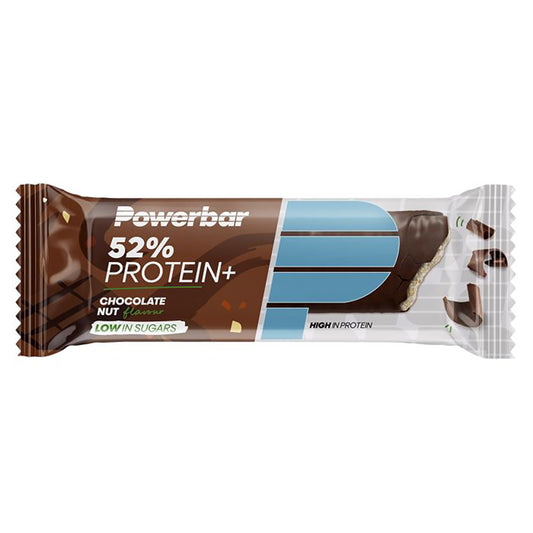
POWERBAR 52% PROTEIN PLUS Recovery Bar (55 g) Chocolate Walnut
Regular price 2,89 €Regular priceUnit price per -
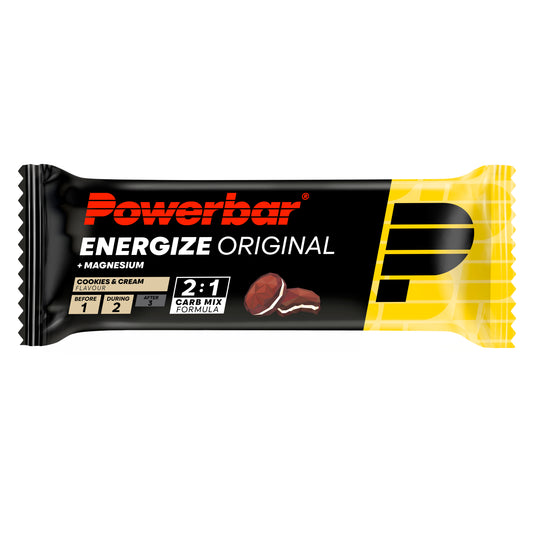
POWERBAR ENERGIZE ORIGINAL (55gr) Cookies & cream
Regular price 2,59 €Regular priceUnit price per -
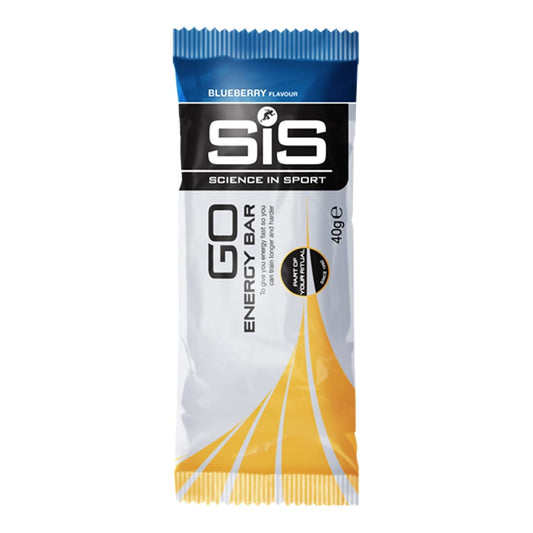
SIS GO ENERGY Bar (40g) Blueberry
Regular price 1,99 €Regular priceUnit price per -
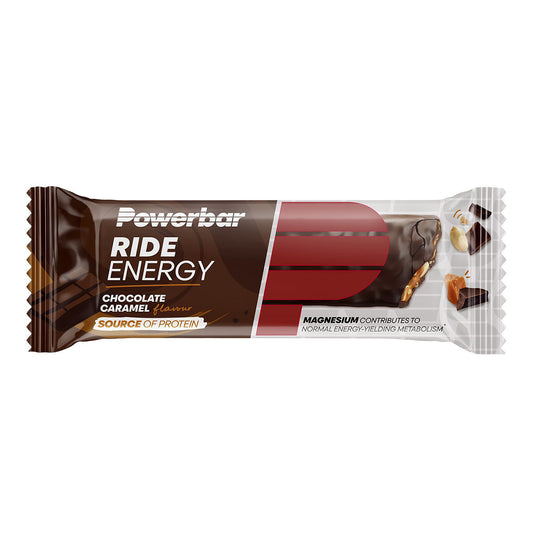
POWERBAR RIDE Energy Bar (55 g) Chocolate Caramel
Regular price 1,50 €Regular priceUnit price per -
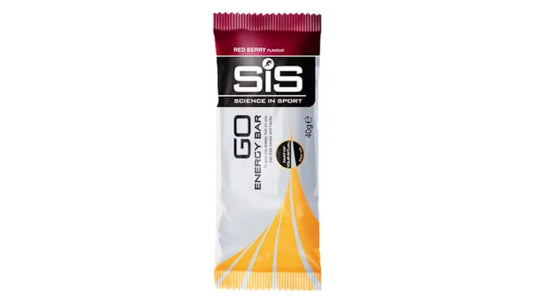
SIS GO ENERGY Bar (40g) Red berries
Regular price 1,99 €Regular priceUnit price per


